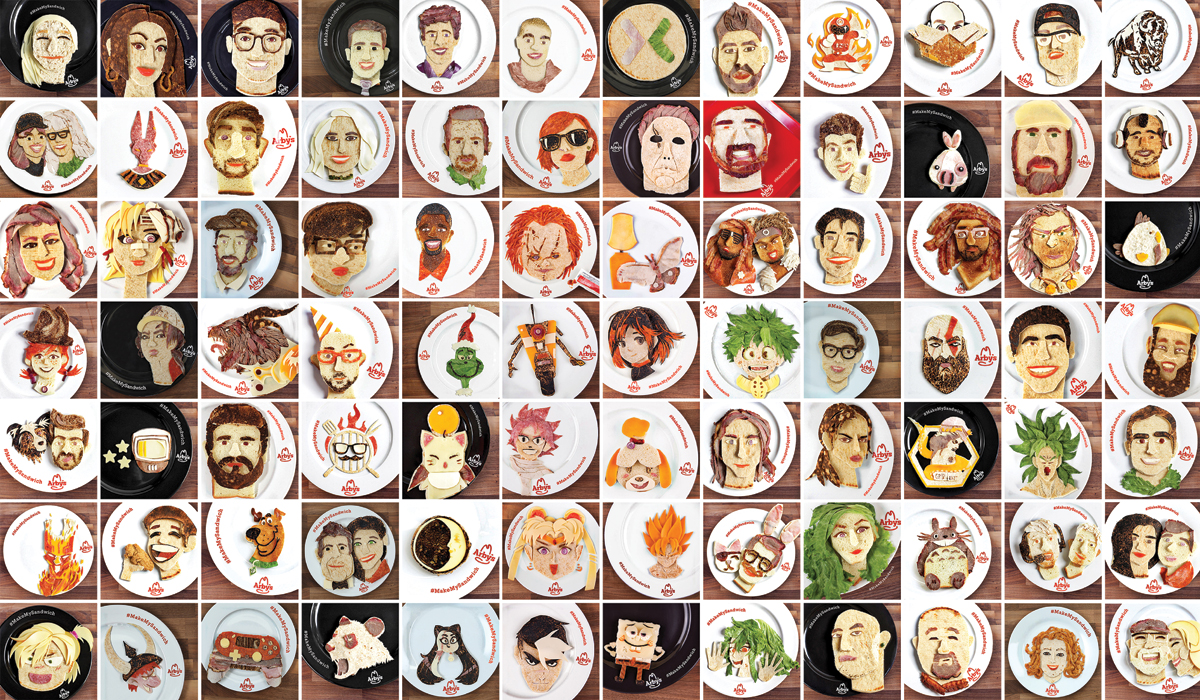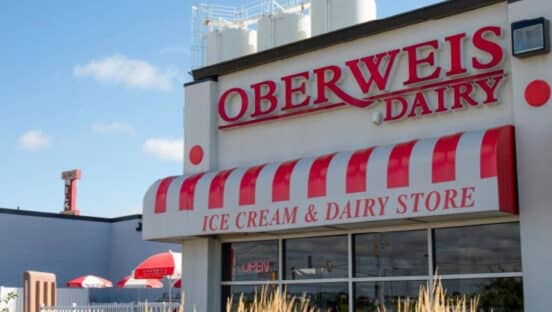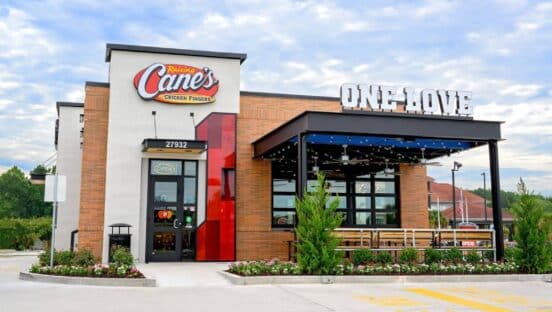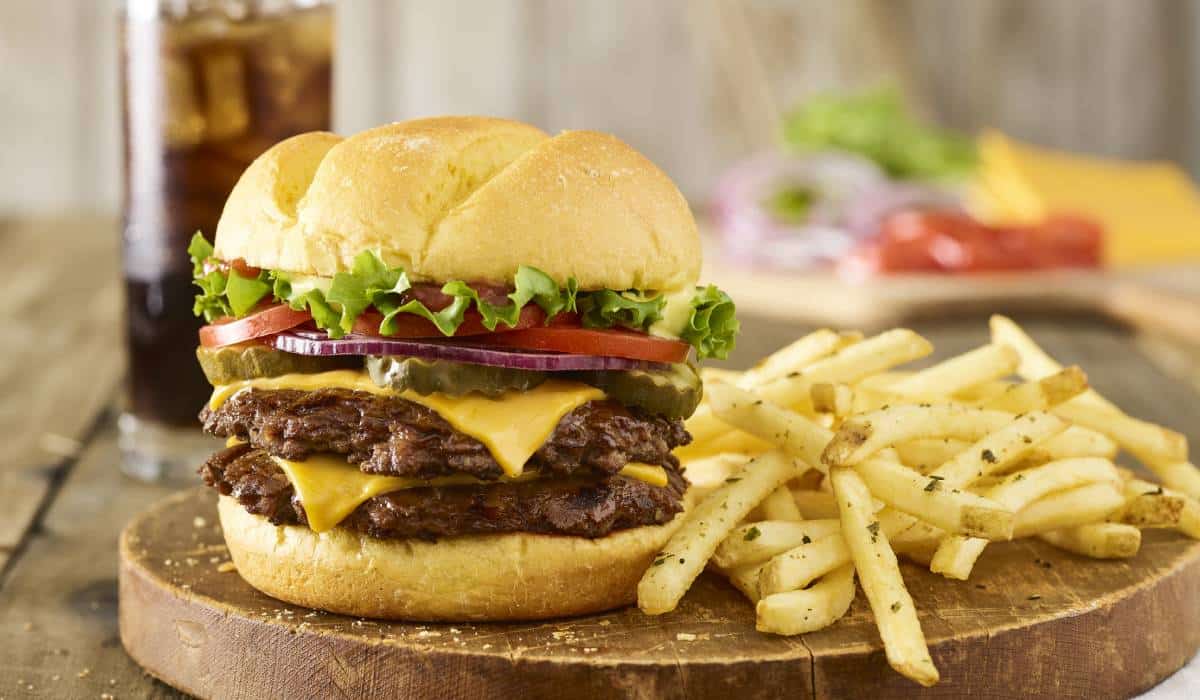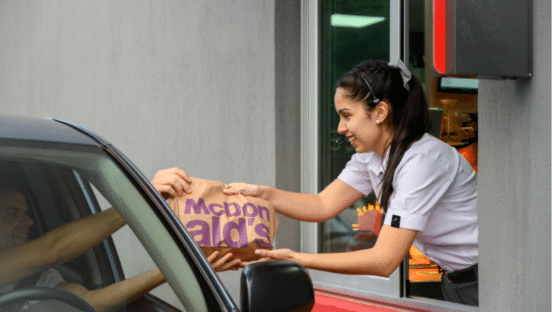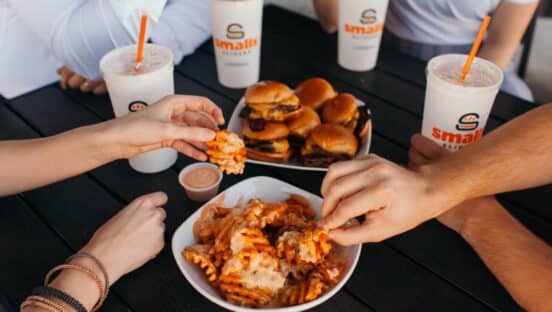On January 26, 2014, musician Pharrell Williams showed up at the Grammy Awards wearing a cartoonishly oversized Vivienne Westwood hat. Depending on which viewers you asked, it looked like he was either wearing Smokey Bear’s hat or the logo of Atlanta-based sandwich chain Arby’s.
“I started to notice a number of tweets mentioning the Arby’s logo in relation to the hat worn by Pharrell,” says Joshua Martin, senior director of digital and social media at Arby’s, who was manning the brand’s social channels that evening. As buzz grew, he decided Arby’s should jump into the conversation, tweeting from the account, “Hey @pharrell, can we have our hat back?”
The tweet went viral, gaining momentum each time the pop star took the stage in the hat. Arby’s responsive-marketing triumph was sealed in the wee hours of the next morning, when Williams playfully replied with a question of his own, “@Arbys y’all tryna start a roast beef?”
Of course, plenty of brands from Pizza Hut to Gain laundry detergent tried to tie their messaging into the annual music awards show that year, but Arby’s tweet dominated, with more than 83,000 retweets and more than 48,000 favorites by morning.
The hat seen ’round the world went on to claim a place in pop-culture lore—Williams auctioned it off to Arby’s for charity, and it’s since been displayed in Washington, D.C.’s Newseum and the Grammy Museum’s pop culture history exhibit. But it also represents part of a major turning point in Arby’s social strategy, in which the brand found its witty, unapologetic voice at a time when it was largely seen as out of touch.
“Being a bold brand, and not [being] afraid to be confident and have a different approach to things our competitors don’t, is an approach that came to life for us four or five years ago,” Martin says. “Until then, if you took the logo off our image, the content could have been coming from any other fast-food brand.”
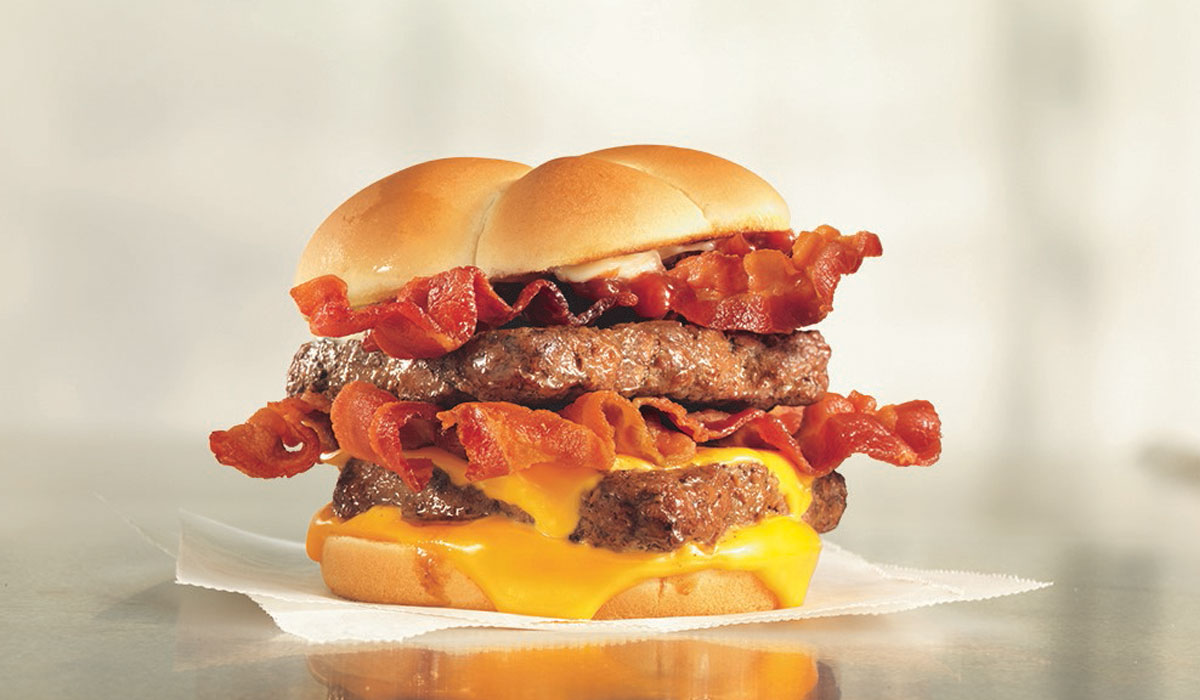
Think like a human
In fact, hard-selling Twitter feeds and staged Instagram grids were the historic strategy of most quick-serve brands. But as average engagement rates with food and beverage brands hover around 1.7 percent for Instagram and a paltry 0.06 percent for Twitter—according to a 2019 report by social analytics firm Rival IQ—it’s not enough to look pretty and sell to people. It’s about embracing social for what it is: our messy, ever-evolving, real-time zeitgeist populated (mostly) by actual human beings.
“Think like a human; it’s really simple,” says Tressie Lieberman, vice president of digital marketing at Chipotle, on how the brand approaches social. “Who are you? What do you stand for? What are your values? Occasionally as a brand that might mean you have to shake things up, too, because as humans we evolve.”
Chipotle underwent a marked shift in strategy last year, turning away from being “Instagram-perfect” and instead cultivating a more multidimensional presence. Lieberman characterizes Chipotle as an optimistic and honest brand that believes in cultivating a better world, based on its foundation of transparency and using real ingredients. But it doesn’t take itself too seriously—aiming for a fun, clever, and conversational voice.
That might take the form of a tweet calling out people who fill their water cups with lemon slices (almost 94,000 favorites, 17,000 retweets), or wishing good morning to everyone “except people who take our Tabasco bottles” (109,000 favorites, over 25,000 retweets). It might be a post of customer Monique Wood’s yearbook photo on Instagram, in which she recites her regular Chipotle order (63,000 likes). Sometimes it means addressing the trolls on Twitter who “call Chipotle trash,” with a link to an article about how Chipotle is tackling food waste through using compostable bowls and recycling some 81 tons of waste.
“Let’s call it out so people pay attention, and now that we have it they can see how trash is something we’re passionate about,” Lieberman says, adding that it’s still a fine line. “There are certain people you’re not going to engage in conversation with. It’s about knowing when to turn the other cheek and go back to human values.”
One of the internet’s most famous friendly-ish trolls might be burger chain Wendy’s, which has gained a reputation for roasting everyone from actor Devon Sawa to Planters Peanuts and even its competitors on Twitter. In 2017, the brand famously called out McDonald’s for using frozen beef following the burger giant’s announcement that it would start cooking most of its Quarter Pounders with fresh beef.
“.@McDonalds So you’ll still use frozen beef in MOST of your burgers in ALL of your restaurants? Asking for a friend,” stated the tweet, which received over 172,300 favorites and 68,000 retweets.
The key, says James Bennett, Wendy’s senior director of media, social, and partnerships, is that the brand roasts from a place of love rather than hate—valuing its community “like you would a friend,” and holding itself to the same standards one would for friends. In the interest of being present, engaging, real, and having fun, two-way conversations can take precedence over promotional-type messaging, particularly on fast-paced channels like Twitter.
“We do consistently call out competitors when they aren’t living up to the product expectations we think consumers should expect—which happens a lot,” Bennett says. (The brand’s ribbing of McDonald’s continues occasionally.) “We’ll always look to have consumers’ backs, and that’s led to some fun interactions. When someone asks us our opinion, regardless of the topic, we’ll share what we think and always in our unique voice.”
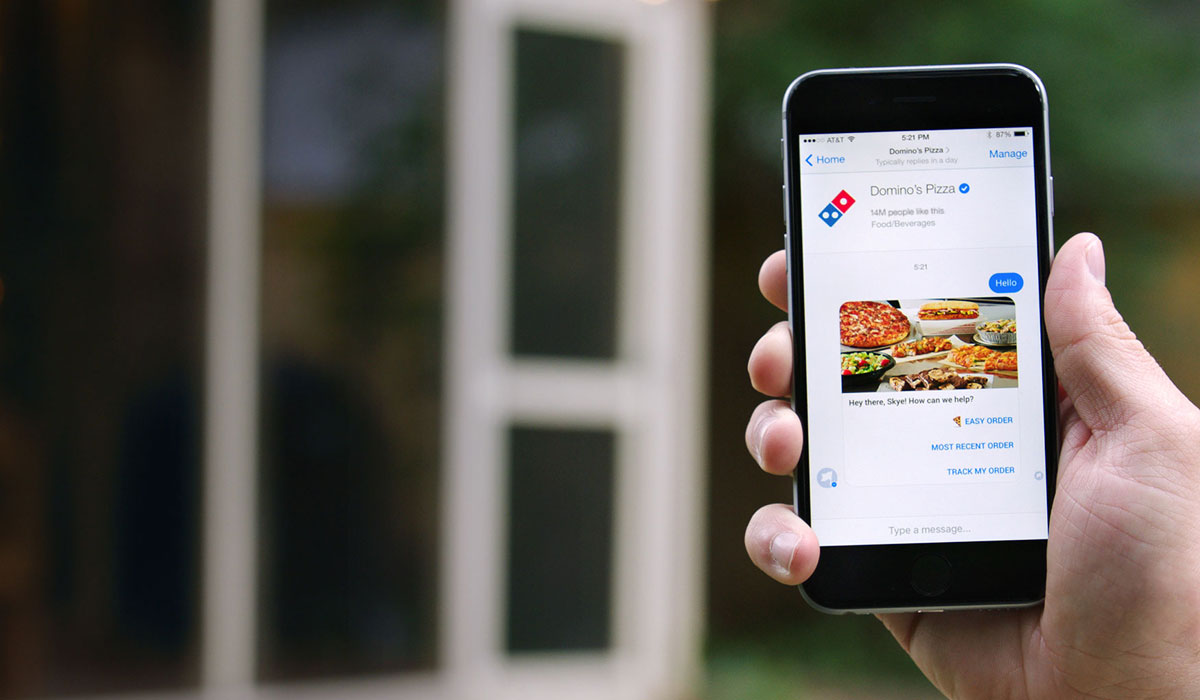
Listen, listen, listen
Much like human relationships, listening often begets brands’ most successful social interactions, like Wendy’s massive “#NuggsForCarter” campaign in 2017, in which customer Carter Wilkerson posed the Twitter question of how many retweets he’d need to win a year’s worth of chicken nuggets, to which Wendy’s replied 18 million. The resulting number of retweets—3.4 million— was no slouch, becoming the most recorded in the platform’s history (and, yes, Wilkerson did get his nuggets).
This year, the brand issued a challenge to customers to help bring back its Spicy Chicken Nuggets, quoting a tweet from Chance the Rapper pleading for the menu item to return.
“Y’all keep asking, so here’s your chance. The people in charge say if you guys can get our tweet (this one right here) to 2 Million likes, they will bring SPICY CHICKEN NUGGETS BACK. Let’s freakin’ do this!” Wendy’s tweeted. The 2 million likes took just two days.
Listening has been key to Arby’s shift of focus back to food and to reaching a younger audience. When the brand posted a photo of its Potato Cakes shaped into a triforce in 2015, paying homage to a sacred golden relic from the wildly popular video game “The Legends of Zelda,” it created a Twitter frenzy.
“We knew we were onto something interesting with producing content and speaking the language of a true fan,” Martin says. “We thought, How can we focus on food and passion and tie into things people are passionate about?”
The brand enlisted creative agency Moxy to create celebrity portraits using paper products and Arby’s signature sauces. Last September, in an effort to shift its messaging to focus on sandwiches, it created the Instagram account @sandwich dedicated to making portraits out of sandwich ingredients. “People loved it,” Martin says. “We made, gosh, like 100 [portraits] in a span of two months.”
Arby’s now fields 20–30 requests daily from customers asking them to create portraits surrounding everything from beloved television characters like Dwight Schrute from “The Office” to pro wrestlers, video game characters, and pop stars.
Being seen
Listening also naturally ties into customer service, since social channels represent a direct line to quick-serve brands for consumers. Rachael Lewandowski, social media and reputation manager of Dublin, Ohio–based barbecue chain City Barbeque, says she spends more time listening and interacting than generating original content on the brand’s Twitter, Instagram, and Facebook accounts, in part through directly responding to every customer service–related direct message and comment on all three channels.
“If someone complains and other people see those comments and you don’t respond, they’re like, Why are you ignoring this person?” she says. She’ll move conversations to direct messages or ask the customer to email her directly, which is a quick way to defuse customer frustration. “I think people like that they’re not getting a robotic response from an agency or bot. It’s, ‘Please email me @Rachael, I want to talk to you and try to make it right.’ If they spent $25 and had a bad meal, we’ll ask them to try us again with a $40 gift card.”
Domino’s has built a reputation as one of the most tech-forward brands via a thriving digital ordering business and leading-edge innovations like delivering to customer hotspots and testing driverless delivery. Because it fields two-thirds of orders digitally, Domino’s spends a lot of time and energy addressing customer complaints on social—staffing a 24/7 customer care team to respond to each complaint with a direct message.
Elsewhere, the brand approaches paid and organic content with its identity in mind, which Domino’s director of marketing and media Steve Kennedy says is fairly uncomplicated, with the brand being among the world’s largest pizza delivery chains.
“We’re a brand for everyone that’s pizza-focused—er, more pizza-obsessed,” Kennedy says. “Our social voice has grown up around people who’ve lived and breathed selling pizza throughout their whole careers; 90 percent of our franchisees started as a manager or delivery driver.”
It’s no secret that people love to argue with one another on social, and it turns out that pizza is a source of raging debate, including whether pineapple is an acceptable topping.
“We’re not going to get into a heady debate, but in those places where it’s a natural level of discourse, like Twitter or Facebook, we’ll ‘pizzafy’ it,” Kennedy says. “Whereas on Instagram, [we’re] more likely to show a picture of a really great looking pineapple pizza and let people have at it in the comments.”
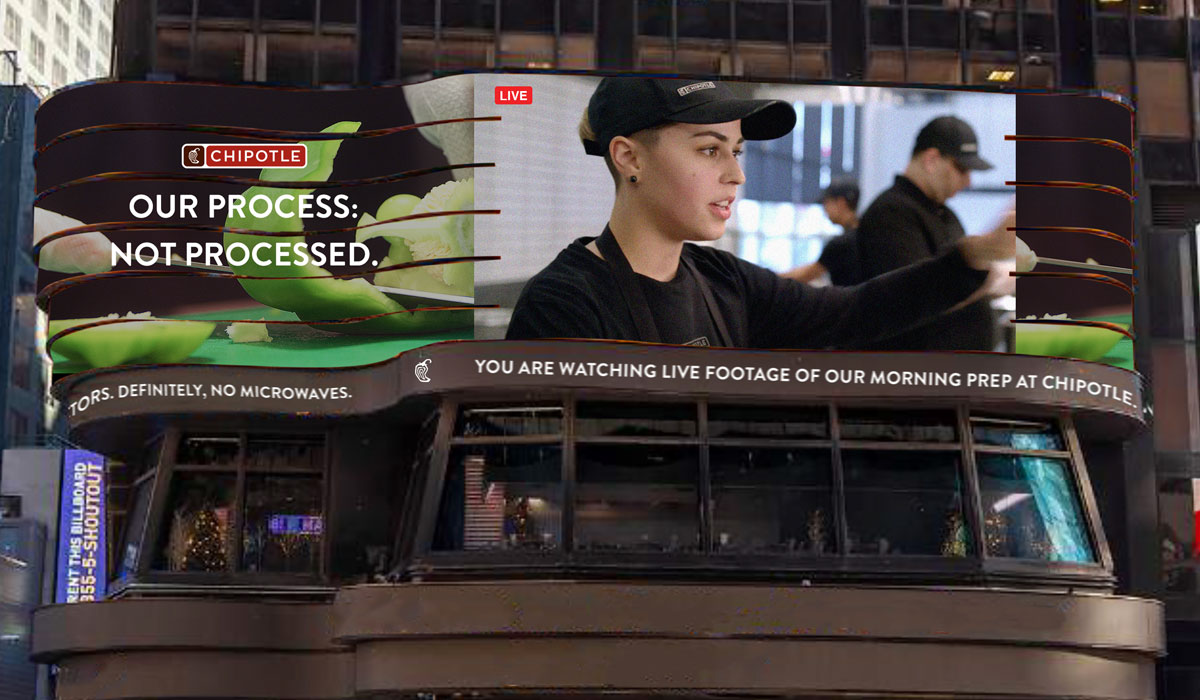
What is success?
But how does a brand measure the success of a fiery Twitter exchange or thousands of passive “favorites” from a return-on-investment standpoint? Domino’s holds organic and paid social efforts to different standards of measurement. Because the former is about entertaining, engaging, and educating on new platforms, its success is tracked based on direct response and new loyalty, whereas the success of the more significant paid social content is based on traditional media advertising goals.
“There’s lots of metrics and nuances within each,” Kennedy says. “But they’re imperfect, and you have to ebb and flow with what’s actually happening, and understand the context in which you’re evaluating the metric. For instance, share of voice is wonderful, as long as it’s positive.”
Indeed, most leading brands approach social more as a platform to foment love and loyalty than as a profit driver. Having learned the hard way, they’re picky about which pop culture moments they jump into.
“Sometimes—even I’m guilty of this—brands will try to insert themselves into things and hop on the bandwagon, but I try to avoid that because that gets really tired really fast,” Lewandowski says. Still, City Barbeque was quick on the uptake during HBO’s “Game of Thrones” final season, when the brand doctored a viral still of a scene featuring an accidental Starbucks cup by superimposing a Motherload barbeque platter onto the photo.
Brands are even choosier about leveraging platforms for activations or brand announcements, like Arby’s loyalist-geared announcement of the return of its seasonal Orange Cream Shake, or Chipotle’s creation of limited-edition scented Giphy stickers following the success of the digital version, which pulled 225 million views. This is largely to protect what the brands have grown in the hopes that, when a customer makes a choice about where to eat, they’ll remember those connections.
“Social has definitely opened up people’s perspective about the brand,” Martin says. “We’ve seen over and over very qualitative results—people saying, ‘I’ve never been to Arby’s, but since you connected with me on my favorite anime character, I’m going to go.’ Thirty minutes later, they @ us with a picture of their drive-thru bag.”
Building on recent successes, Chipotle is looking beyond existing channels for activations and engagement to platforms such as short-form mobile video app TikTok, which it partnered with on a hashtag challenge for free delivery and digital payment service Venmo, where it paid out various amounts of free Chipotle in March concurrent with the announcement of its new rewards program. It was the second company after Uber to get its own emoji, one of a chipotle pepper.
“We’re so heavily mentioned on Venmo that there was a natural connection,” Lieberman says. “We only want to show up if we provide value or are endemic to that platform.”
But in this fast-moving culture of experimentation, it’s worthwhile to take risks, which is why the leading brands empower their marketing teams. “You can’t be too precious,” Lieberman says. “Sometimes you hit it out of the park, sometimes you don’t, and that’s a really good thing. We keep trying things.”

